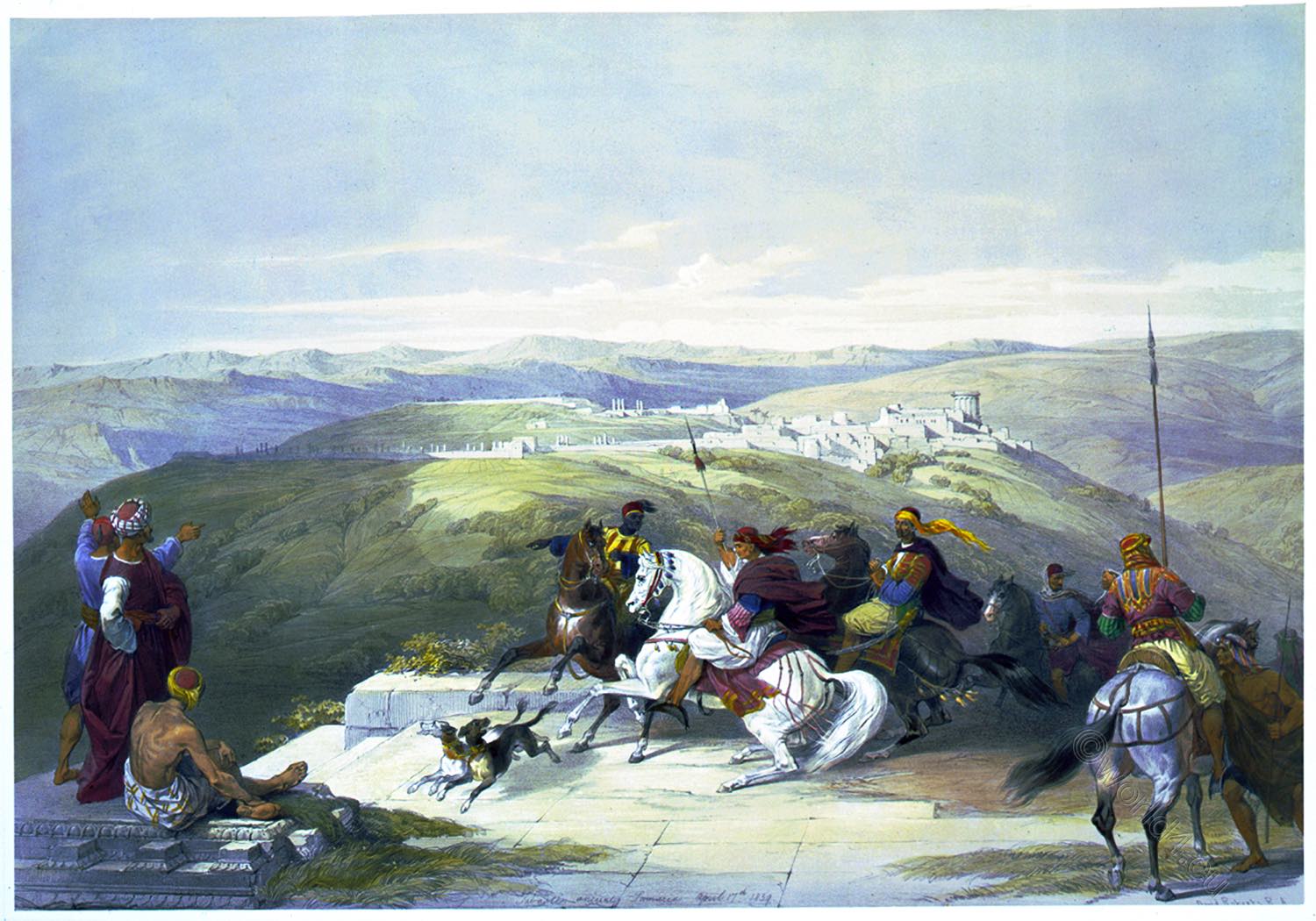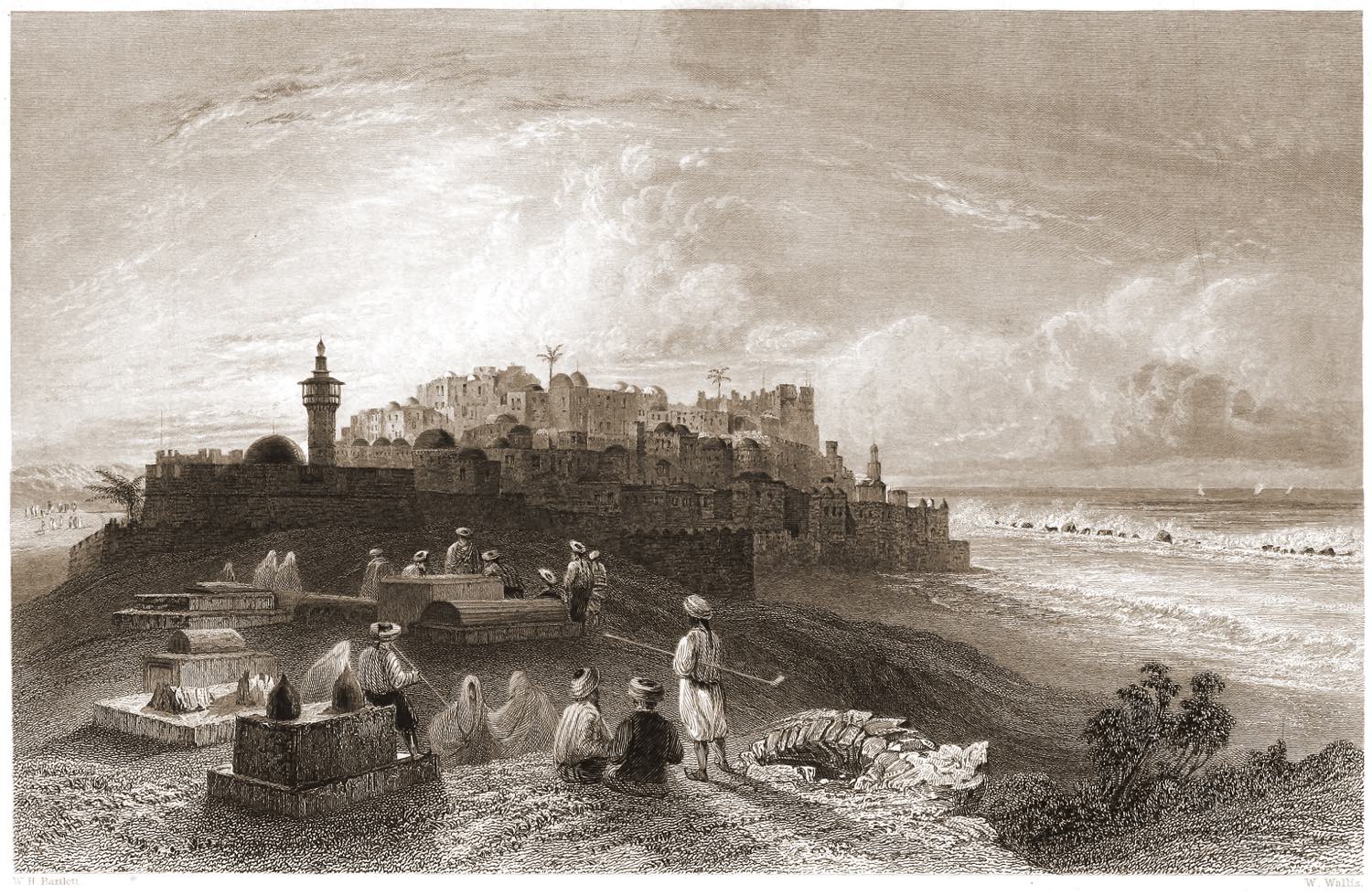Samaria, modern Sabasṭiyah (with various spellings including Sebaste, Sebastia, Shomron, Samareia).
Samaria was the capital of the Kingdom of Israel from about 876 BC. It is located in central Palestine, West Bank territory, not far from the modern city of Nāblus, ancient Shechem, on a hill about 90 m high.
After the reconquest of the Kingdom of Jerusalem from Muslim hands, the presbytery and apse of the cathedral were used as the basis for the construction of a mosque in 1187. It is mentioned in the writings of Ya’qut al-Hamawi (1179-1229), who placed it as part of the Filastin Province of Jerusalem, located two days from the city in the District of Nablus. Furthermore, the famous Syrian geographer adds, “Here are the tombs of Zacaryyah and Yahya, the sons of Zakariyyah (John the Baptist), and of many other prophets and saints.
Sebastia became part of the Ottoman Empire in 1517 along with the rest of Palestine, and in 1596 it appeared in tax records as part of the Jabal Sami nahiya of the Nablus liwa.
Today’s Sebastia is a village in the Palestinian Territories.

SEBASTE, ANCIENT SAMARIA
by David Roberts.
The first aspect of this Village, the relique of the City, is singularly impressive. “It is difficult to conceive” says the Artist, “any place surpassing this in the beauty of its position, or any spot more commanding in situation than that of the ancient Capital of Samaria, standing as it does in the most fertile portion of Judea, and enriched by the taste and wealth of the most superb of all its governors, Herod. I never was more delighted, than when slowly winding round the brow of a hill it first burst upon me, bathed in the brightness of an eastern sunset. If, desolate as it is, the ruins of this city could thus strike the eye, what must its effect have been when its sides and summit were covered with the temples and palaces of Herod!” 1)
A lofty promontory, advancing boldly into the midst of a broad and beautiful plain; a fertile basin, surrounded by a circle of noble hills, marked the natural position for a Metropolis. It was founded by Omri, King of Israel, the father of Ahab, about the year 925 B.C.; the hill on which it was built being bought by him of Shemer, from whom its name of Samaria is derived. 2) From this period the Kings of Israel abandoned their former metropolis Shechem, and Samaria became their political capital. In history, the city is often confounded with the country.
The vast ruins which now exist at Sebaste are chiefly those of the Palace of Herod. The most remarkable are those of a Colonnade, which has been traced to- the extent of 3000 feet! In the western part, above sixty of these columns are still erect, and many more are partly buried, and partly strewn around. These columns are sixteen feet high, and two feet in diameter at their bases.
Robinson says, that he could discover no trace of their capitals; the Artist, however, found one, which was Corinthian. There is scarcely a doubt that this vast colonnade was the work of Herod, who enriched Samaria with splendid edifices; but its purpose is unknown, and those columns now stand in the midst of ploughed fields, “the skeleton, as it were, of departed glory.” 3)
Samaria continued during two centuries to be the chief city of the ten tribes (until the Captivity, B.C. 720), and during the whole period it was the seat of idolatry. The great prophets, Elijah and Elisha, gave sacred distinction to its history; and the tombs of Elisha and of Obadiah the prophet are said to have formerly existed here.
The original Samaria was taken and razed to the ground by John Hyrcanus. But it must have been soon rebuilt, for Pompey restored it to its former inhabitants; and when Augustus gave the country to Herod the Great, Samaria was renewed by that superb monarch with extraordinary magnificence. Its name was then changed to Sebaste, 4) in gratitude to his Imperial patron.
Herod filled it with a colony of six thousand veterans, made it a powerful fortress, and surrounded it with a strong wall, twenty stadia in circuit: reserving in its midst a “Sacred place,” in which he raised a temple in honor of Augustus! famed for its architecture. Such appears to have been the Samaria of the New Testament, in which Philip preached the gospel, and where a church was formed by the Apostles.
Samaria early became an Episcopal city. Its Bishop, Marius, or Marinus, attended the Council of Nice (a.d. 325). The history of the Crusades adds little to that of Sebaste. It had a Latin Bishop in 1155. Saladin passed through it in 1184, on his retreat from Kerak.
In the Middle Ages it was scarcely mentioned more than as an important place, from its situation, well watered, and abounding in gardens, olive-groves, and vineyards. It still contains a few Greek Christians; and a titular Bishop of Sebaste resides in the Greek Convent at Jerusalem.
1) Roberts’s Journal. 2) 1 Kings, xvi. 24. 3) Biblical Researches, iii. 145 4) Now called by the Arabs Sebustieh.
Source: The Holy Land, Syria, Idumea, Arabia, Egypt, & Nubia, by David Roberts, George Croly, William Brockedon. London: Lithographed, printed and published by Day & Son, lithographers to the Queen. Cate Street, Lincoln’s Inn Fields, 1855.
Continuing
Discover more from World4 Costume Culture History
Subscribe to get the latest posts sent to your email.






